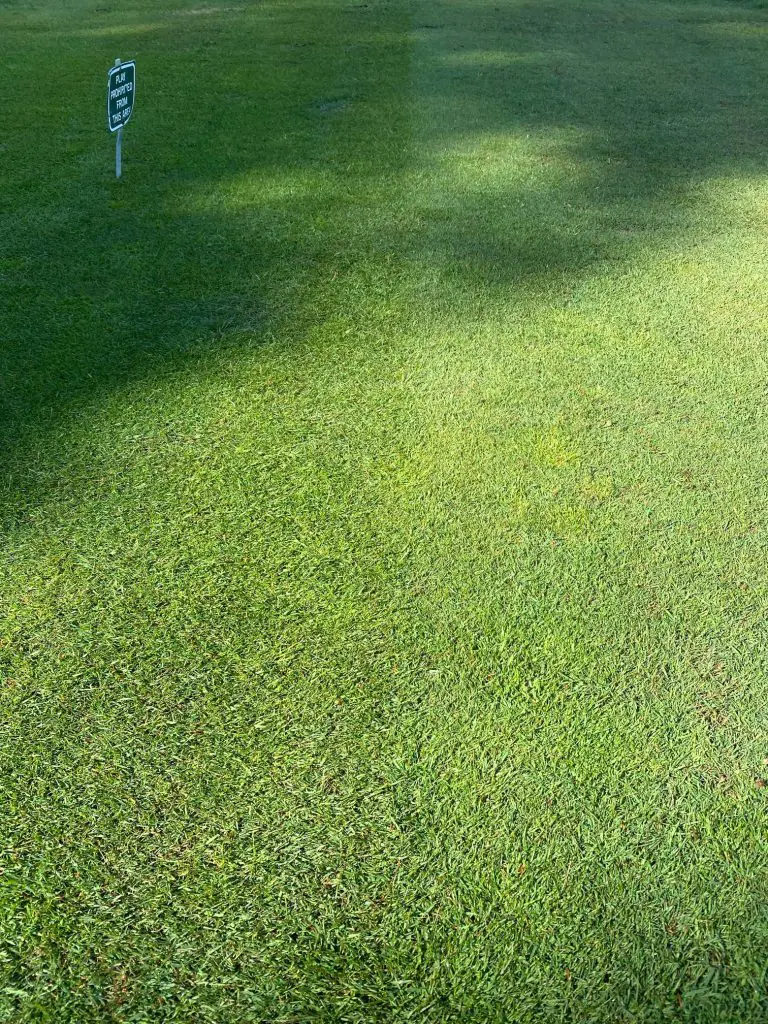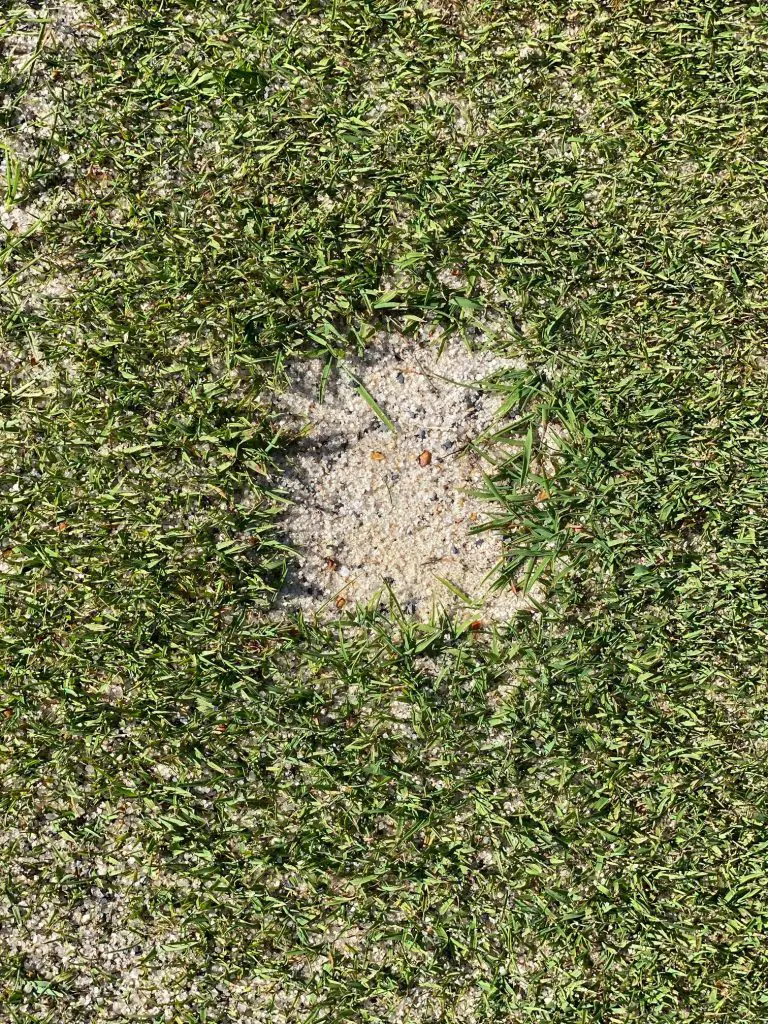Tee trial highlights natural vigour of modern creeping bents
A trial carried out by Germinal in association with Dunblane New Golf Club has illustrated the natural vigour of two modern creeping bentgrass cultivars, 007 DSB and 777 DSB.
The trial, which saw one half of an academy/driving range tee at Dunblane New Golf Club in central Scotland being sown with 007 DSB creeping bent and the other half with 777 DSB creeping bent, was seeded at 12 g/m2 in late May 2020. Apart from being mown at 9 mm once the sward had established, the trial plot received no other managerial attention or inputs: it hasn’t been watered, fed or scarified during the following 12 months.

The trial tee at Dunblane New Golf Club: 007 on the left and 777 on the right. Despite receiving no water or nutritional inputs, both cultivars have produced vibrant, healthy swards.
The aim of the trail was to assess the natural growth habits of two of the sectors newest creeping bents and to see how they germinated, established and matured with minimal management. “Both cultivars have been used successfully in climates as diverse as those in the colds of Russia and the deserts of Dubai, but we really wanted to understand how they can cope with the Scottish climate,” explains Alan Thomson, Technical Sales Representative for Germinal in Scotland. “What this basic, but real-world trial has proven is that modern creeping bents can be used to successfully create first-class swards with very little managerial input.”

Their creeping growth habit enables both 007 and 777 to infill scars or damaged areas quickly. Here, new growth is evident around the perimeter of a divot.
Both cultivars established quickly and performed well despite the tricky conditions that the weather during the following 12-months threw at them: a very wet winter followed by an exceptionally dry spring. And, despite not receiving any nutritional or fungicidal inputs, both cultivars remained green and clean throughout.
“For greenkeepers looking to establish a hard-wearing, top-quality swards but with minimal resources, 007 and 777 really are worthy of serious consideration,” Alan surmises.
“Even with minimal inputs they have both performed exceptionally, so any irrigation, nutrients or aeration that can be added will only add to their performance. And, thanks to their creeping growth habit, any areas which did suffer from poor grass coverage – either as a result of physical or climate-induced damage, soon started to infill to create a complete and consistent sward covering.”


